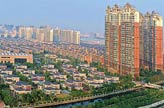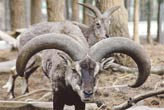Rich in every hue
Updated: 2011-08-26 11:58
By Yang Yang (China Daily European Weekly)
|
 The Shoton festival in Lhasa is always a colorful affair and begins on June 30. There is lots of music and locals drink yogurt. Ji Mao / for China Daily |
Tibet is a land of glorious mountains, big blue sky and rich culture
On the roads leading to the Tibetan capital of Lhasa, Buddhist pilgrims turn their prayer wheels and prostrate themselves on the roads in their once-in-a-life journey to the holy land. Their action reflects a special passion many share toward this vast land of intrigue.
Located in Southwest China and neighboring Myanmar and India, Tibet covers 1.22 million square kilometers and is the highest region on Earth with an average altitude of more than 4,500 meters.
The extreme elevation and accompanying severe weather can pose challenges for tourists. But no matter the difficulties, Tibet is and will always be a popular destination for many. Here are five places worth considering.
1. Lhasa
The sacred capital city is the emblem of Tibet and the emblem of Lhasa is the Potala Palace. The white and red structure is made of wood and is a fine combination of architectural techniques and styles of the Tibet, Han and the Manchu ethnic groups.
Visitors can see more than 2,500 square-meter paintings on the walls, and nearly 1,000 pagodas. There are tens of thousands of Thangka, which are colorful paintings of Buddha and Tibetan Buddhism stories, usually on cloth or paper so that they can be carried around by devotees. There are many other precious objects belonging to the past Dalai Lamas.
Across from Potala Palace is Yaowang Mountain, which provides the best view to appreciate the iconic building. The Moya statues on the mountain's western side are stunning and are made up of thousands of Buddha statues carved into the rock.
The Jokhang Temple, in the heart of Lhasa, is the most important place of worship in Tibet and features wall paintings covering more than 4,000 sq m. The main Buddhist statue in this temple is the most revered in the whole autonomous region.
The most prosperous commercial area in Lhasa is the Barkhor Bazaar, another treat for visitors. Four-colored (red, yellow, white and blue) prayer flags hang from Tibetan-styled buildings, many selling various souvenirs. But buyer beware: Most are fake Tibetan accessories and antiques.
Lhasa has many festivals, and Sakyamuni's birthday celebration on April 15 is as big as they come. Sakyamuni founded Buddhism and during the Saga Dawa Festival many worshippers come from all over Tibet to pray.
Shoton Festival begins on June 30 and originated at Drepung Monastery, to celebrate the end of Yarn, a monk's 100-day summer retreat. It includes performances of the musical dance dramas known as Ache Lhamo (Tibetan Opera).
E-paper

City's dynamic teutons
German cluster gives a fillip, competitive edge to local economy in Taicang
Unveiling hidden treasures
Rich in every hue
More than just a game
Specials

Hunting grounds
Opinion divided as China debates opening door to international players

Flying the TCM flag
A small German town is home to Europe's flagship clinic for traditional Chinese medicine

Animal attraction
World's youngest chief fur designer set to launch own label and tap into huge China market.
